Musicarta Easy Piano Style
Free Sample Lesson Two
"Second Pair of Chords"
Like the first module, this module uses the MEPS hand position and rhythmic textures on just two chords to make a piece of music. Again, they are next-door chords – this time, E minor and D major, and the higher chord (E minor) is the home chord. The music in this module therefore has the E minor key signature, which is F sharp.
Here's the final module performance.
Download the lesson notes here.
The key signature
|
The Second Pair of Chords uses F sharp throughout. This is indicated in the music key signature. |
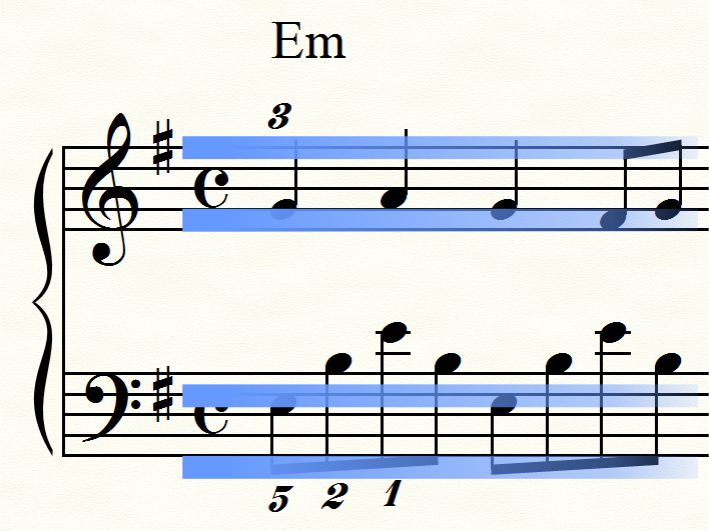 |
All Fs in the piece are played on black key F sharp, just to the right of white key F. |
The hand positions
Here are illustrations of the two hand positions. Take a moment to look at the semitone counting, which shows the difference between the major and minor chords.
|
First position - Em 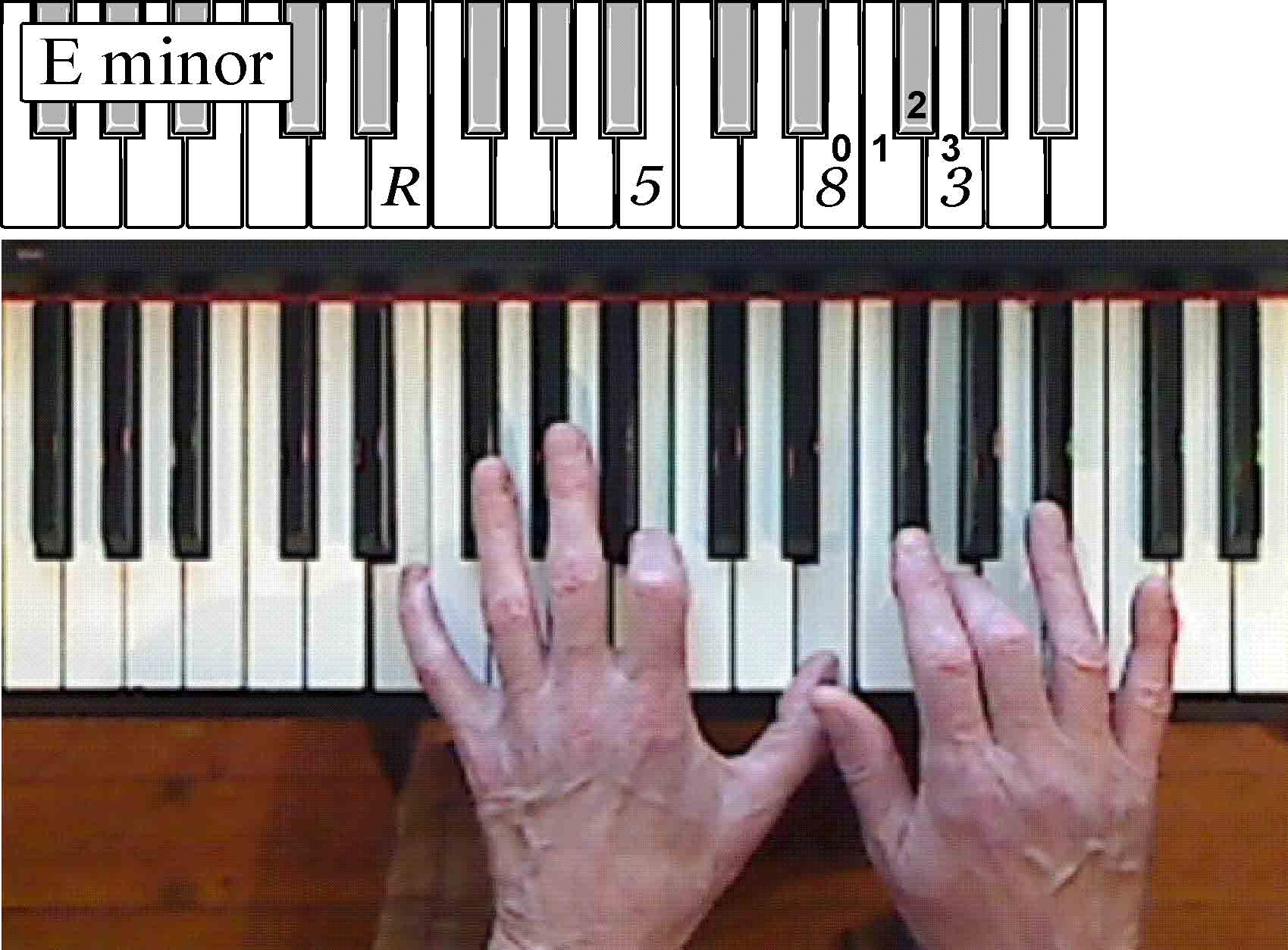 |
Second position - D 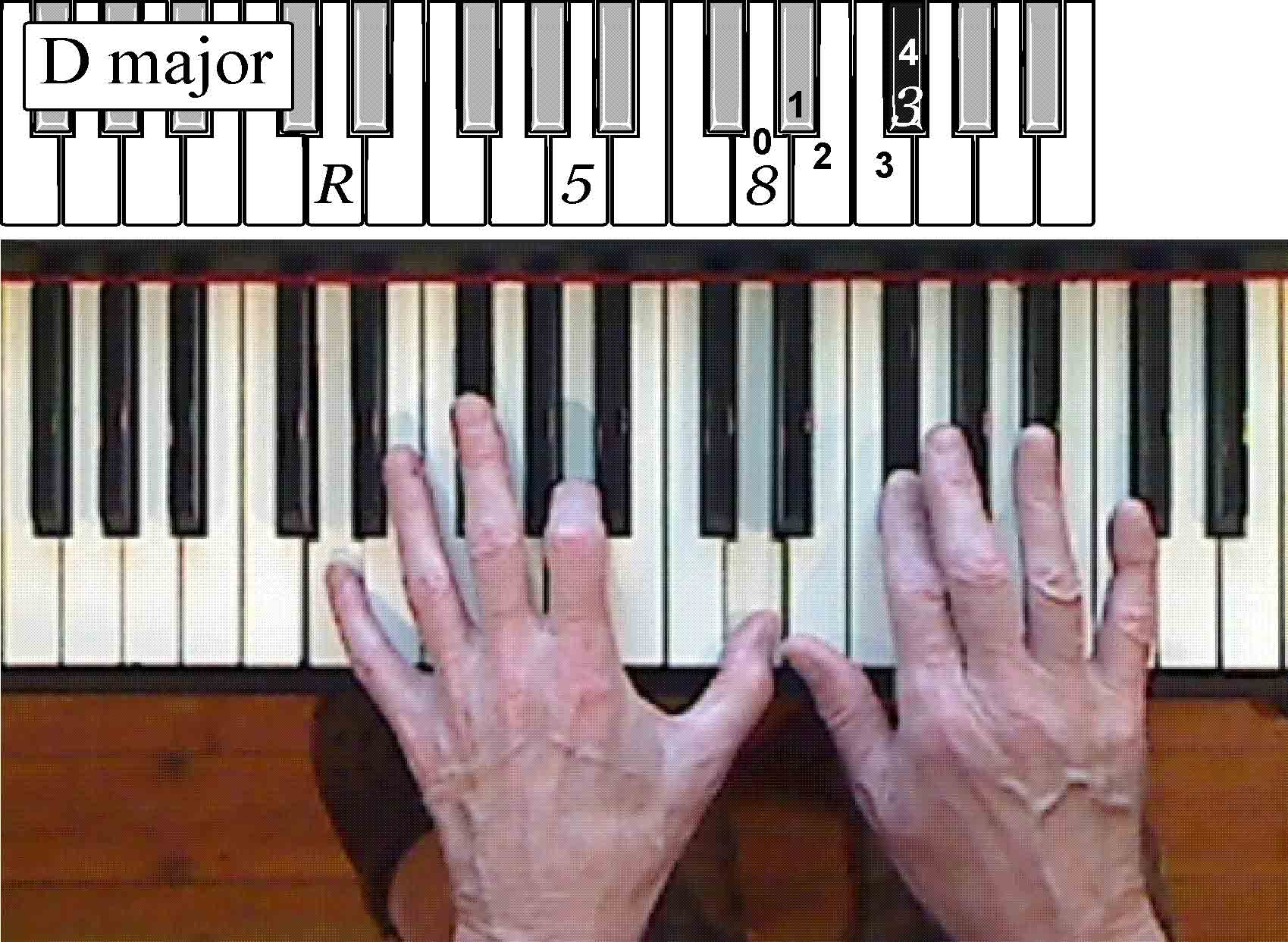 |
The build-up
Here's the teaching video for the build-up to the first version.
Here is the base material – the standard eight-quaver left hand with the right hand melody ‘wobbling’ around the third (chord tone).

A slight adjustment moves the emphasis in the even-numbered bars onto the notes either side of the third (the fourth and second).

Next, we are going to pull forward most of the right hand notes. This is called 'anticipation' – you anticipate the notes, play them early.

The right hand only plays 'on the beat' at the start of a bar. The rest of the right hand notes are ‘off the beat', on the ‘ands’, and come with LH2.
(Note: The 'count' is for the right hand only.)
Here is the scrolling-MS video for the rhythmic build-up. The more thoroughly (i.e. the number of times...) you work through this build-up, the surer you progress will be.
Module Study, Version 1
You already have enough material now for a simple version of the module study.
Here's the performance video and the music.
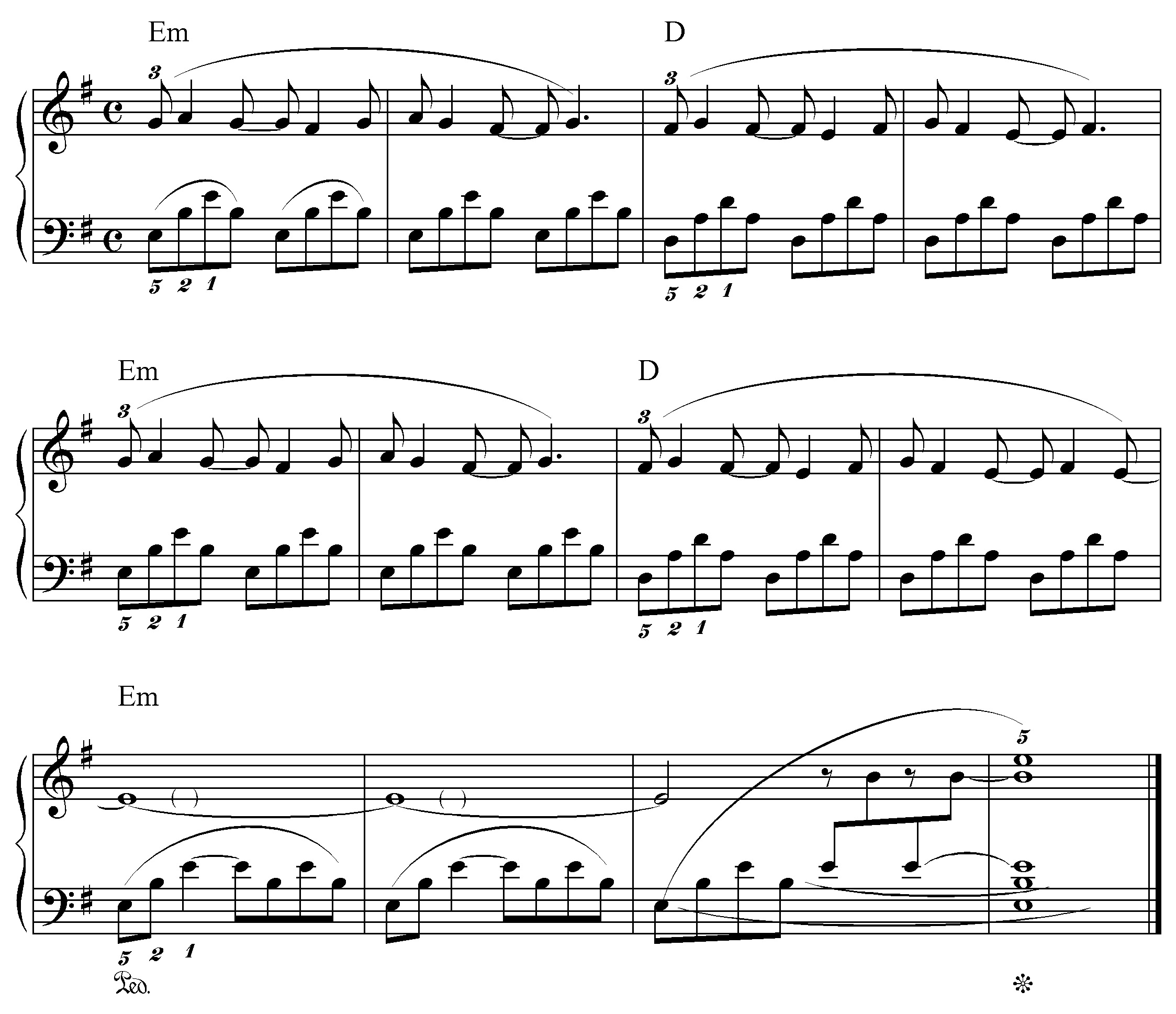
Ending
The only new music here is the ending.

The ending is what Musicarta MEPS calls a 'ladder' - a rising or falling series of roots and fifths only.
Use the TLR analysis to figure out which hand plays, when.
Here's the teaching video for the ending.
Don't be freaked out by the complicated-looking music. "It's simple, really"!
- This kind of ending is called a ‘ladder’ – the hands, combined, pass the music up through a series of roots (E) and fifths (B).
- Both hands are claiming the middle E. The little pairs of brackets indicate that your right gives it up for the left hand - but it continues sounding, as if it's a held melody note.
- In the first two bars of the last line, the left
hand ‘drops’ two quavers, on counts “(2) and 3”. (You'll meet this pattern again, in the next lesson.)
Module Study, Version 2
This is the same as Version 1, only with the left hand 'dropped quaver' pattern from the Version 1 ending.
Here's the teaching video for this version.
'TLR Analysis'
The difficulty is to fit the anticipated right hand notes with the dropped quaver left hand. Here's 'what actually happens'.
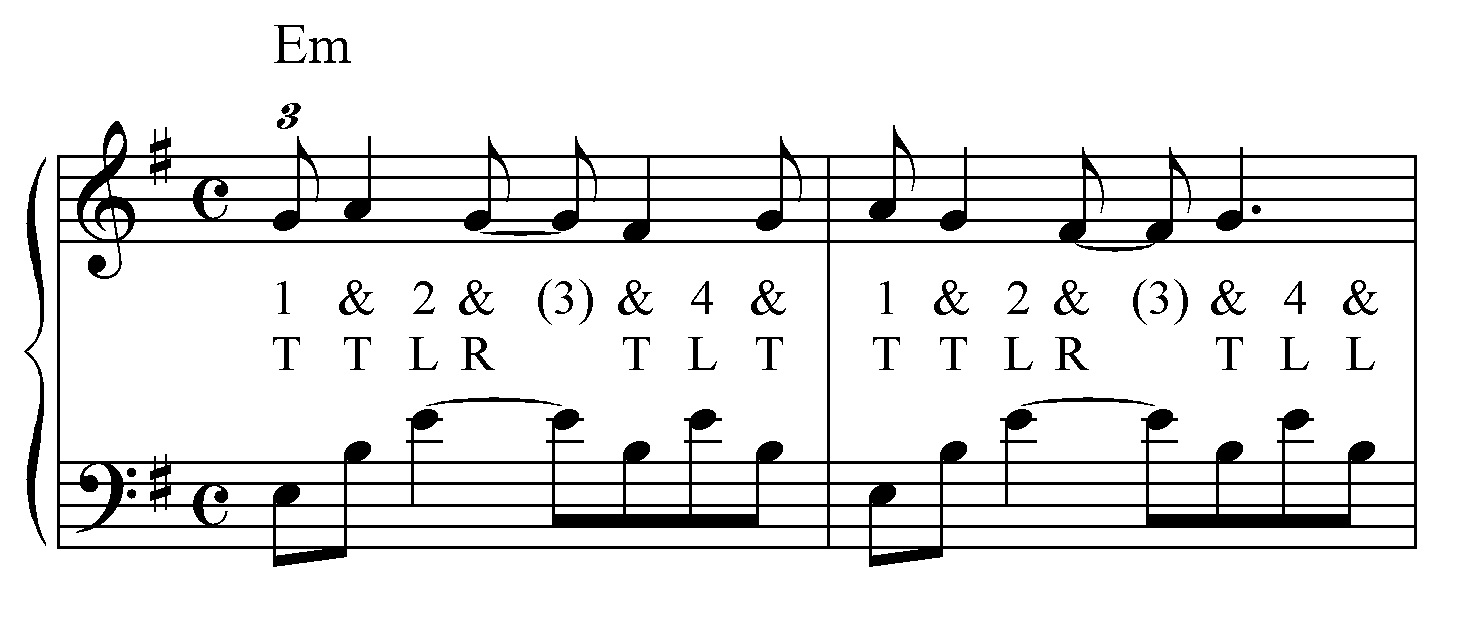
In between the staves, you see 'the count' - which shows you that the left hand drops the "& 3" quavers - and a series of T, L and R letters.
These stand for Together, Left and Right, and tell you whether the hands play together (T), or just the left hand plays (L), or just the right hand (R).
This is very useful when things get complicated. Here's the teaching video for the 'TLR analysis'.
Here are the 'all-quavers' and 'dropped quavers' versions side by side.

Here's the full scrolling-MS performance video.
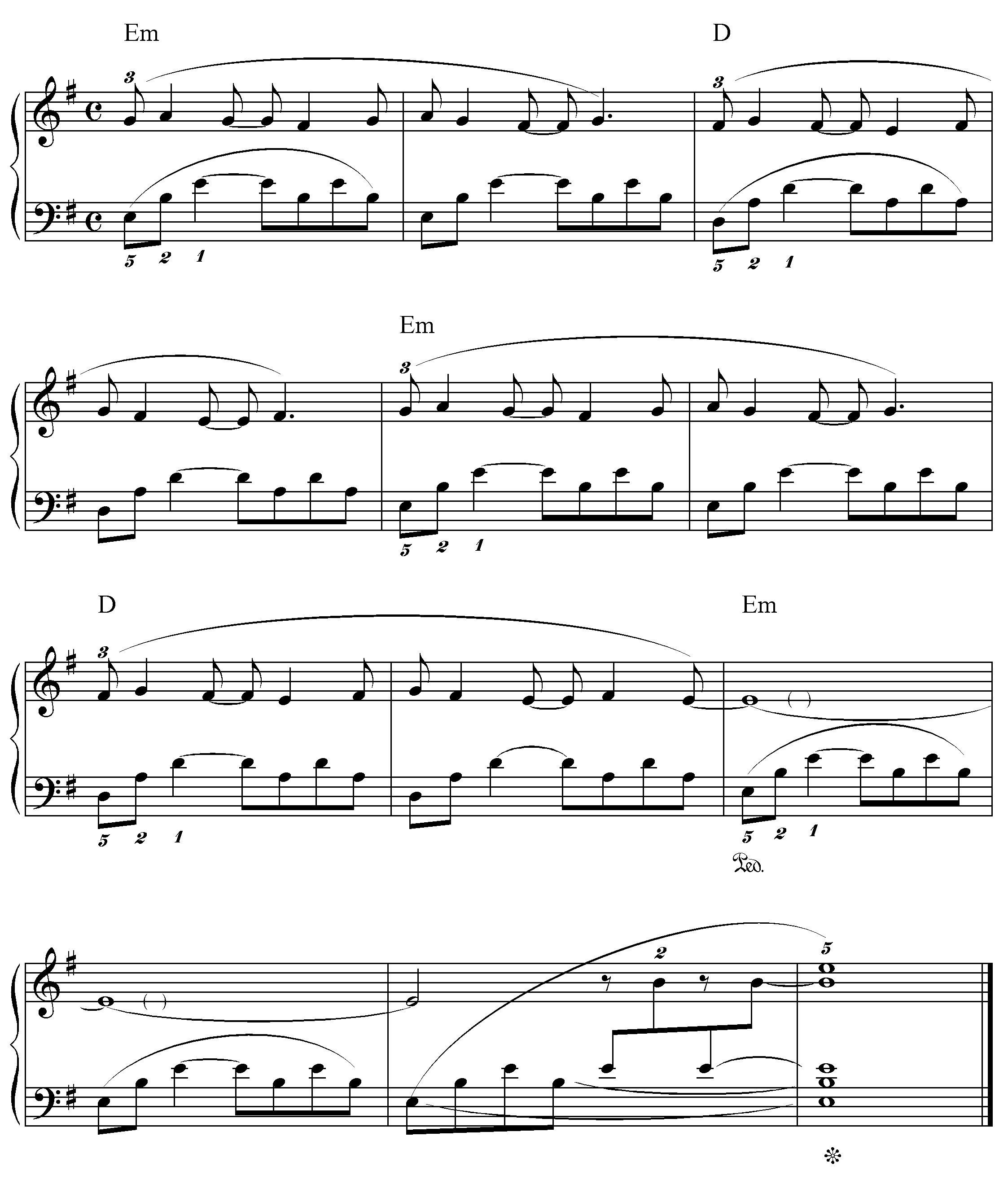
Version 3 - 'Smoothed' Quavers
There's an optional, additional development of this riff with 'smoothed' right hand quavers - where the melody frees itself up from the strict quaver beat of the left hand.
Listen to the demonstration scrolling-MS performance video.
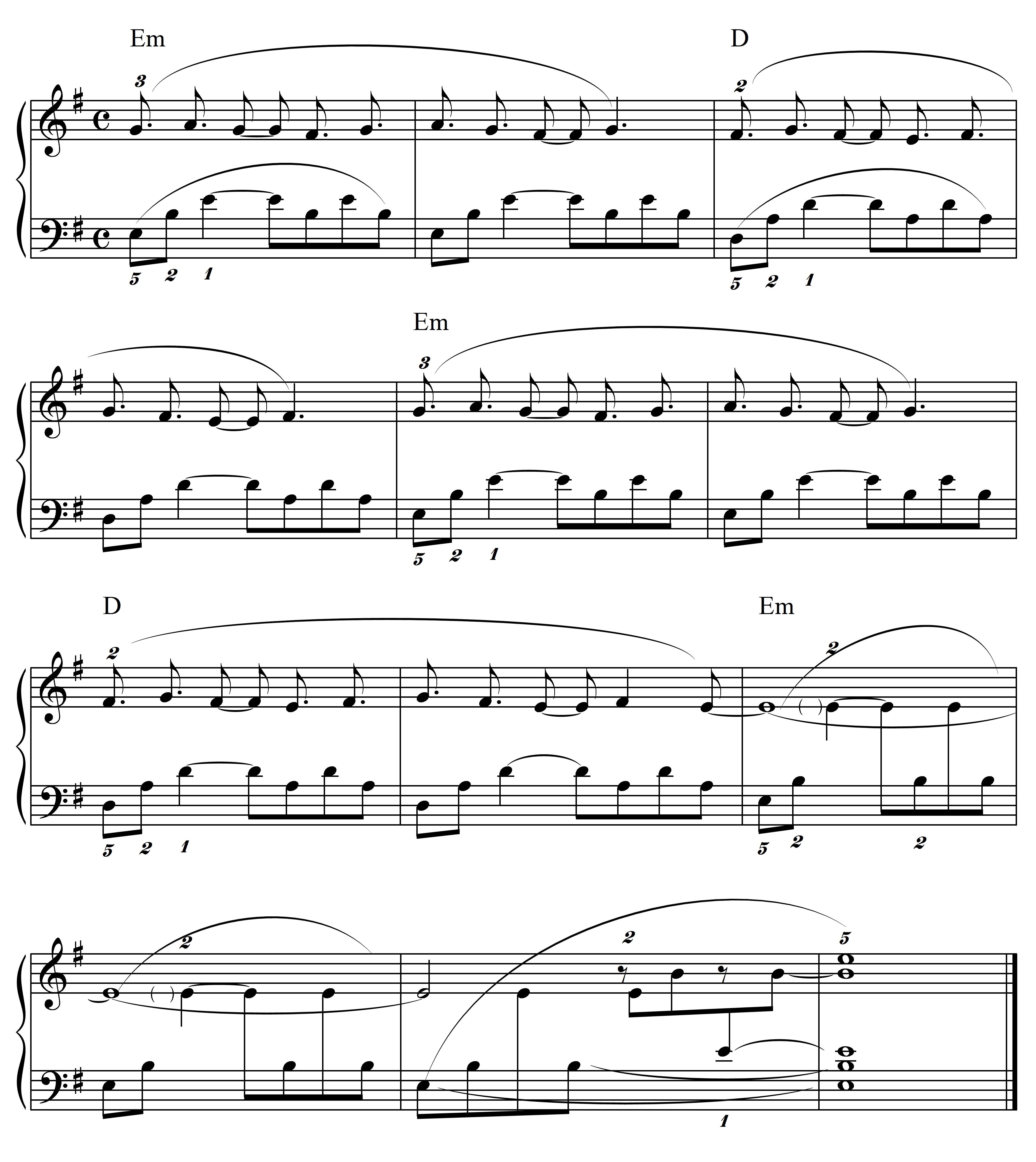
Here's the teaching video for this rhythmic style.
You will want to practice the 'smoothing' over the Version 1 all-quavers left hand first.

Here's a closer look.
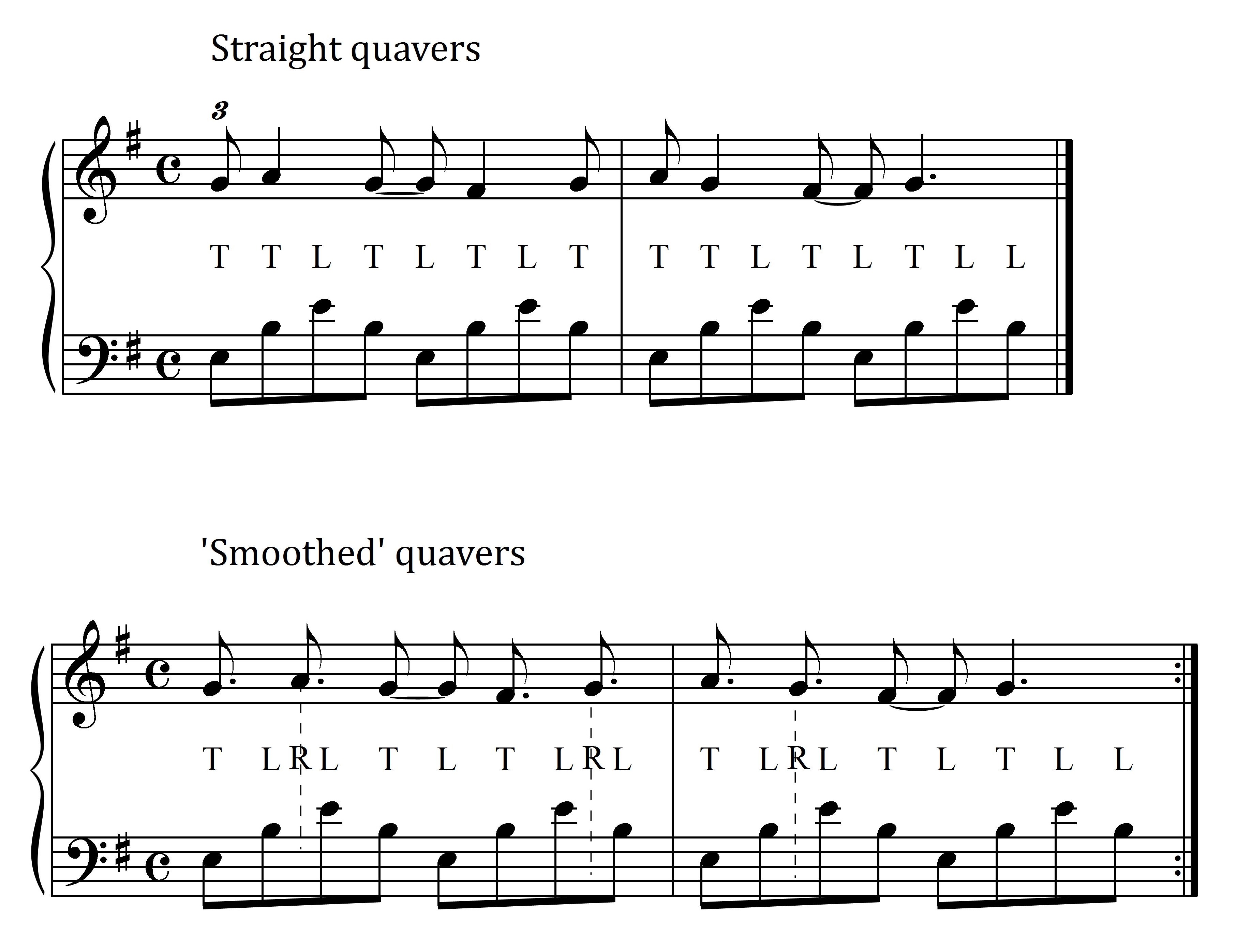
Then practice the smoothed rhythm over the 'dropped quavers' version.

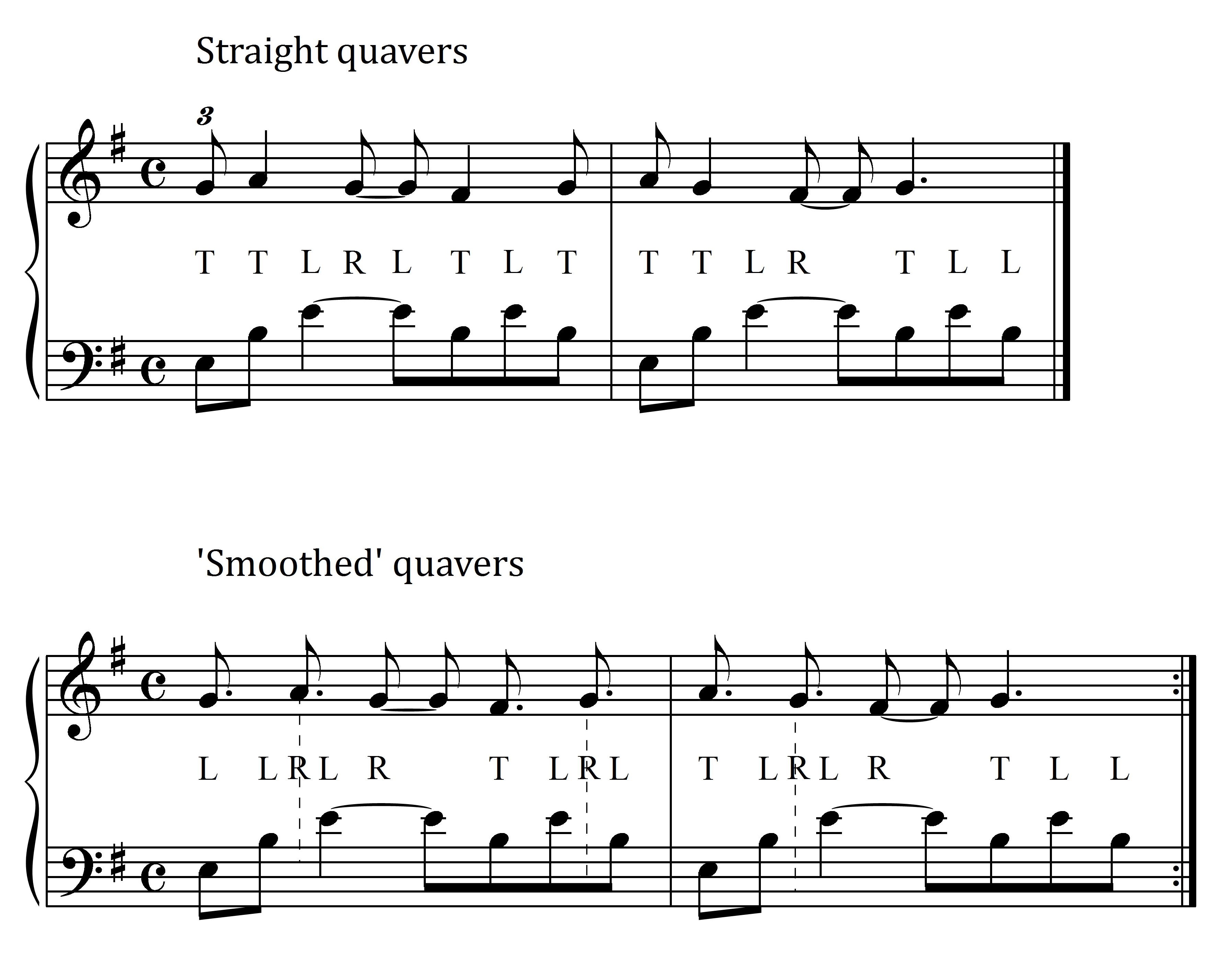
Lastly, here's the smoothed-quaver performance again.
This is the second of two free sample MEPS lessons, although there are more sample content pages showing where the Musicarta Easy Piano Style video workbook can take you.
Also, the new, video-rich workbook study pages are premiering on the Musicarta Patreon Premium zone while the course upgrade is ongoing - along with a whole lot more exclusive content. Check it out!
|
OUT NOW! |
THE MUSICARTA BEAT & RHYTHM WORKBOOK At last! An effective approach to keyboard rhythm & syncopation skills. Learn more! |
ONLY $24.95! |
|
MUSICARTA
EASY PIANO STYLE Series Nav |
|
MUSICARTA
EASY PIANO STYLE Series Nav |
The MusicartaA methodical approach to keyboard syncopation for
|
PUBLICATIONS
exciting keyboard
creativity courses
CHORDS 101
WORKBOOK

~HANON~
video course

Musicarta
Patreon
PENTATONICS
WORKBOOK
video course

Creative Keyboard
video course

BEAT AND RHYTHM
WORKBOOK
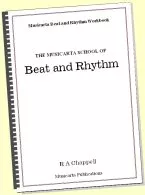
- Volume 1 -

12-BAR PIANO
STYLES WORKBOOK
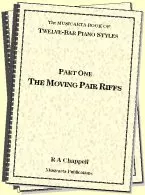
MUSICARTA MODES
WORKBOOK
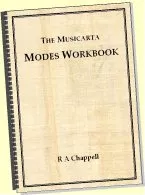
PIANO STYLE
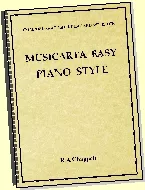
CANON PROJECT
video course
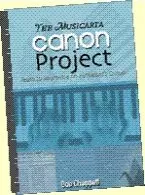
VARIATIONS
video course
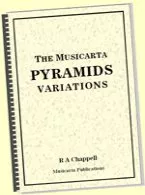
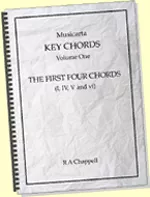
- Piano Solo -
video course
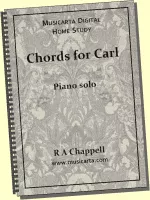
- Piano Solo -
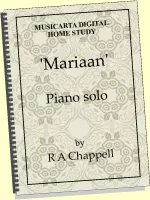

YouTube playlists





 THE LOGO
THE LOGO


